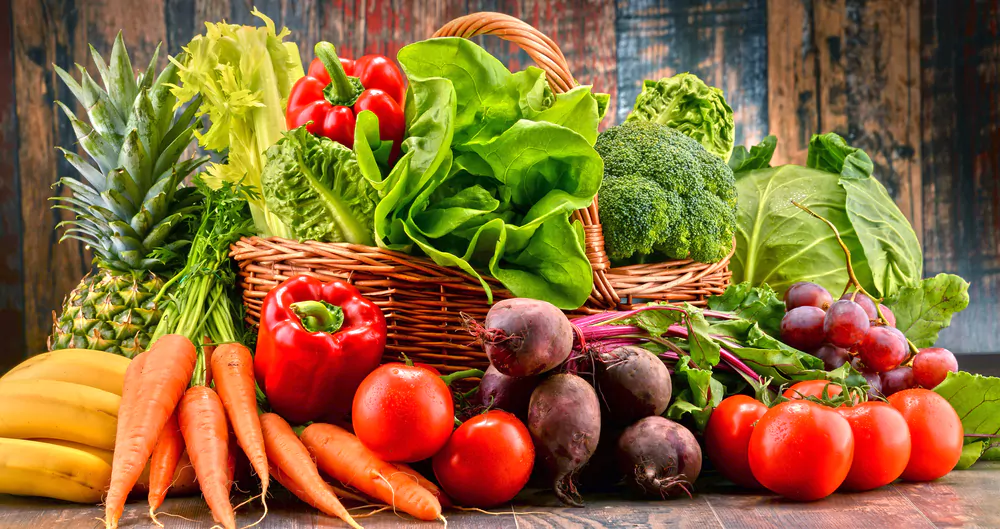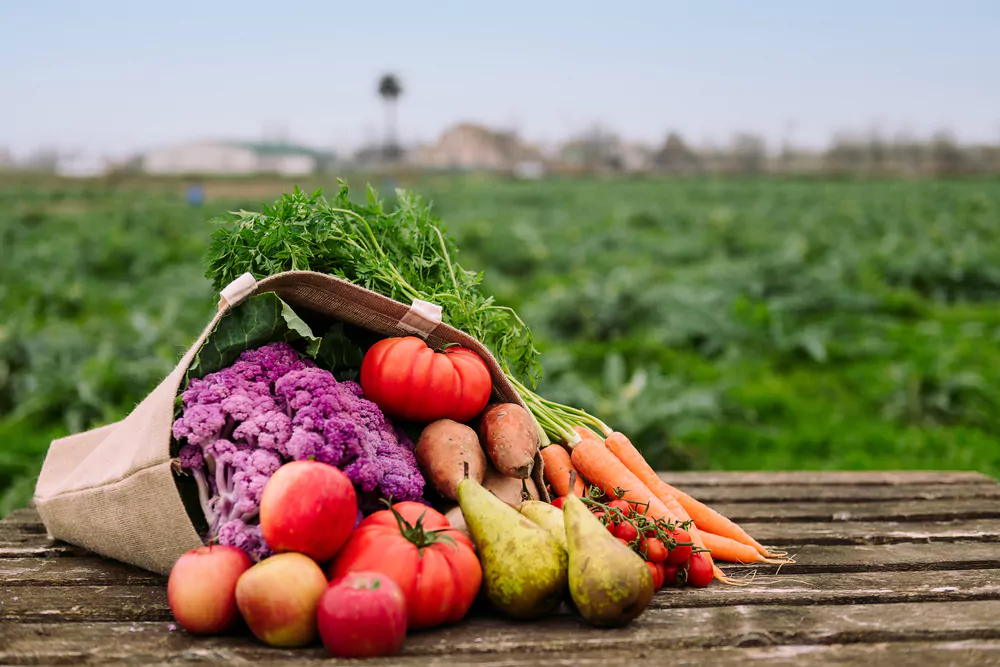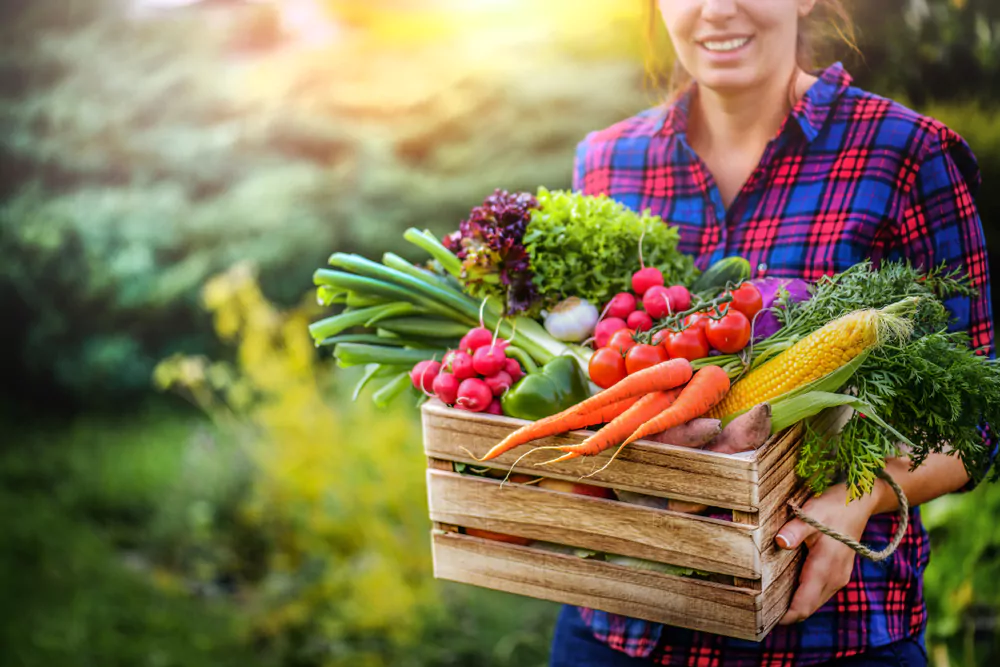Delving Into the Green World: The Wondrous Life of a Vegetable Plant

Welcome to the magical world of vegetable plant – a journey into the green, rich earth that produces the vital ingredients in our everyday meals. A world that holds so much more than meets the eye, where each vegetable plant is a marvel of nature with its unique characteristics, growth cycles, and nutrient contributions. In this blog post, we will delve deeper into the wonders of vegetable plants, exploring their biology, growth process, and the incredible diversity that exists within this category of plants. So, fasten your seatbelt as we embark on an adventure to the verdant world of vegetable gardens and fields.
1 The Biology of Vegetable Plants
Vegetable plants belong to various families within the plant kingdom, each with their unique biological characteristics. They are flowering plants, also known as angiosperms, that bear fruits or vegetables containing seeds. Many of the plants we commonly refer to as vegetables, like peppers, tomatoes, and eggplants, are botanically fruits since they develop from the fertilized ovules of flowers. However, we categorize them as vegetables because of their savory taste profile and their use in culinary applications.
A vegetable plant typically goes through a specific life cycle: from seed to seedling, then to a mature plant that eventually flowers, bears fruit, and produces seeds for the next generation. This cycle could take a few weeks in fast-growing vegetables like radishes or several months in slow-maturing plants like pumpkins.
Root vegetables such as carrots and beets have taproot systems that delve deep into the soil to absorb nutrients. In contrast, leafy vegetables like lettuce and spinach have a fibrous root system that spreads horizontally near the soil surface, soaking up water and nutrients.
2 The Incredible Diversity of Vegetable Plants

The world of vegetable plants is full of color, shape, size, and taste diversity. From the sweet crunchiness of bell peppers to the leafy goodness of spinach and the spicy bite of radishes, there is a vegetable plant for every taste and culinary application.
Cruciferous vegetables like broccoli, cauliflower, and Brussels sprouts belong to the Brassica genus, known for their high nutritional content and cancer-fighting compounds. Root vegetables like potatoes, carrots, and beets are powerhouses of fiber and essential vitamins. They store energy in their roots, which we harvest and consume.
Then there are the Allium vegetables, like onions, garlic, and leeks, celebrated for their distinctive pungent flavors and health benefits, such as their antibacterial properties. Nightshade vegetables like tomatoes, eggplants, and peppers are famous for their versatile culinary uses and high levels of antioxidants.
There’s also the Cucurbitaceae family, which includes cucumbers, squashes, and melons, known for their high water content and refreshing tastes. And let’s not forget the Fabaceae family, with protein-rich legumes like peas and beans, an essential part of vegetarian and vegan diets worldwide.
3 Different Kinds of Vegetables

1. Leafy Greens
Leafy greens such as spinach, kale, and lettuce are renowned for their high nutrient density. They’re excellent sources of vitamins A, C, and K, and packed with fiber. From a biological perspective, these plants focus their energy on producing large, lush leaves to maximize photosynthesis.
Growing leafy greens can be relatively easy. They prefer cooler weather, making them excellent choices for spring and fall gardens. Some, like kale, can even withstand frost and taste sweeter after a cold snap.
2. Tomatoes
Tomatoes are some of the most popular garden vegetables. Botanically a fruit but often treated as a vegetable in culinary contexts, tomatoes come in a myriad of sizes, shapes, colors, and flavors. From small, sweet cherry tomatoes to large, hearty beefsteak tomatoes, the variety is impressive.
Tomatoes are warm-weather plants, thriving in full sun and well-draining soil. They’re known for their high vitamin C content and are also a good source of the antioxidant lycopene.
3. Root Vegetables
Root vegetables like carrots, beets, and radishes are grown for their edible roots. They’re typically rich in fiber and essential minerals. Carrots, for instance, are famously high in beta carotene, a precursor to vitamin A.
These plants generally prefer cooler weather and deep, loose soil to allow their roots to grow unimpeded. Fast-growing radishes can be ready for harvest in just a few weeks, while carrots and beets typically require a couple of months.
4. Peppers
Peppers, including bell peppers and chili peppers, are another group of fruit-vegetables with wide-ranging shapes, sizes, colors, and heat levels. Bell peppers are sweet and crunchy, offering a good source of vitamins A and C. In contrast, hot peppers like jalapenos and habaneros pack a spicy punch, thanks to a compound called capsaicin.
Peppers are warm-weather plants, needing plenty of sun and a long growing season. They’re usually started indoors from seed and then transplanted outside after the danger of frost has passed.
4 Some Exciting Plant-based Recipes

Vibrant Spinach and Roasted Beet Salad
Ingredients:
- 2 medium-sized beets
- 2 tablespoons olive oil
- Salt to taste
- 4 cups fresh spinach leaves
- 1/4 cup toasted walnuts
- Your favorite vinaigrette
Instructions:
- Preheat your oven to 400°F (200°C).
- Wash the beets and coat them with olive oil and salt.
- Wrap each beet in foil and roast for about an hour, or until tender.
- Let the beets cool, then peel and slice into thin wedges.
- In a large salad bowl, toss the spinach leaves with your favorite vinaigrette.
- Top the spinach with the sliced beets and toasted walnuts.
- Serve and enjoy!
Simple Tomato and Basil Pasta
Ingredients:
- 2 cups ripe cherry tomatoes
- 2 cloves of garlic, minced
- 1/4 cup olive oil
- Salt and pepper to taste
- 2 cups of your favorite pasta
- A handful of fresh basil leaves
- Nutritional yeast or vegan parmesan for topping (optional)
Instructions:
- In a large pan, heat the olive oil over medium heat.
- Add the minced garlic and sauté until golden.
- Add the cherry tomatoes, salt, and pepper, and cook until the tomatoes start to burst and release their juices.
- Meanwhile, cook your pasta according to the package instructions.
- Drain the pasta and add it to the pan with the tomatoes.
- Toss well to combine, then stir in the fresh basil leaves.
- Serve with a sprinkle of nutritional yeast or vegan parmesan, if desired.
Refreshing Cucumber and Bell Pepper Gazpacho
Ingredients:
- 1 large cucumber, peeled and chopped
- 1 green bell pepper, seeded and chopped
- 3 ripe tomatoes, chopped
- 2 cloves of garlic
- 1/4 cup olive oil
- 2 tablespoons red wine vinegar
- Salt to taste
- A handful of fresh parsley
Instructions:
- Combine all the ingredients in a blender or food processor.
- Blend until smooth or leave a bit of texture if you prefer.
- Chill in the refrigerator for at least an hour before serving.
- Garnish with fresh parsley and serve cold.
5 Exploring the Benefits of Vegetable Plants Beyond the Kitchen

Vegetable plants are well known for their nutritional benefits, but their value extends far beyond their culinary uses. They play a crucial role in our ecosystems, providing habitat for a variety of insects and small animals. They contribute to biodiversity, help prevent soil erosion, and aid in carbon sequestration, playing their part in mitigating climate change.
Many vegetable plants also have medicinal properties. For example, garlic is recognized for its cardiovascular benefits, while ginger is used to alleviate digestive issues. Others, like hot peppers, are known for their pain-relieving properties.
In conclusion, vegetable plants are true wonders of nature. Whether you’re an avid gardener, a cook, a scientist, or just a curious reader, the realm of vegetable plants holds a wealth of knowledge and experiences waiting to be discovered. Embracing this green world enriches not only our plates but also our lives, health, and planet. Let’s continue to explore, respect, and celebrate these fantastic green beings that nourish and sustain us.
6 Conclusion
The world of vegetable plants is a treasure trove of flavors, nutrients, and fascinating biological processes. From a humble seed to a fully mature plant bearing fruits and vegetables, the life journey of a vegetable plant is a testament to the wonders of nature. The fantastic diversity within this category of plants is a reminder of the richness of our earth and the abundance it offers.
Whether you are a home gardener, a professional farmer, or just a nature enthusiast, the amazing world of vegetable plants offers a lifetime of learning and exploration. So the next time you bite into a fresh salad or savor a hearty vegetable stew, take a moment to appreciate the marvel of nature that brought those vegetables to your plate.
Also, check out our blog on a guide to the tropical world of all fruits to know more about fruits and the recipes you can make to include more nutrition to your plate.
Community Q&A
About This Article
Hardik Jethva is an experienced author of the BestCheck family. Working from scratch, he has developed an amazing interest in testing and writing about different products in a transparent manner. His writing skills got more audience for BestCheck. Apart from his professional life, Hardik has his eyes on travelling, meditation, eating healthy food, socializing with people, and car rides.
This article has been viewed 443 times.



